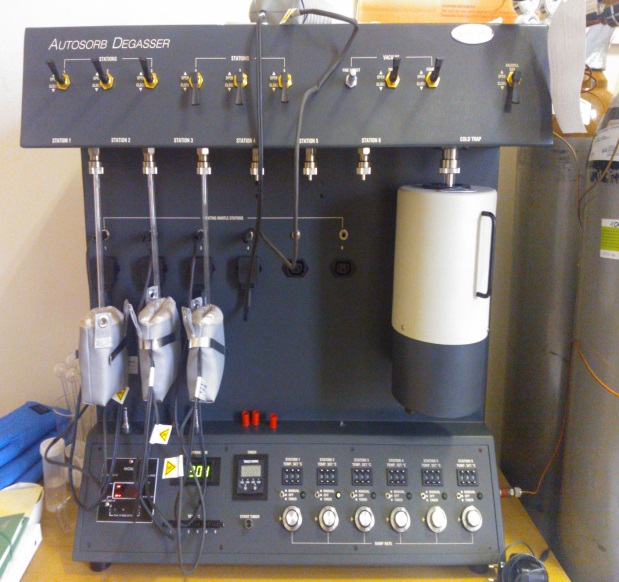
Versatile gas sorption and degassing system set with 4 independent sample analysis stations for characterizing porous materials and powders

Determination of specific surface area for natural and manufactured sorption materials, nanostructurized, functionalized materials by BET and Longmure methods. Determination of distribution of micropores and mesopores using various methods
SPECIFICATION
Gas sorption system:
- Pressure resolution: 0.015 torr
- Transducer accuracy: 0.11% full scale (1000 torr transducer)
- Adsorbates: nitrogen and any other non-corrosive gas with appropriate coolant
- Surface area range: from 0.01 m2/g (nitrogen)
- Pore size range: from 0,35 to > 400 nm
- Pore volume detectable limit: less than 0.0001 cm3/g
- Coolant level: automatic control using level sensor (RTD)
Degassing system:
- Ultimate vacuum: till 1 x 10-3 torr
- Operating temperature: from room temperature to 350 0C
- Degas monitor: thermocouple vacuum gauge
- Cold trap: liquid nitrogen dewar
- Backfill gas: user-selectable (typically helium or nitrogen)
- Sample capacity: 6 samples
Publications
If interested, please fill out the form below
BBCE project´s main objective is to establish a joint Baltic Biomaterials Centre of Excellence for advanced biomaterials development based on the long-term strategic cooperation between AO Research Institute Davos, Switzerland (ARI) and Friedrich-Alexander University of Erlangen-Nuremberg, Germany (FAU) on the one hand and RTU RBIDC, LIOS, RSU and RSU IS on the other hand.

